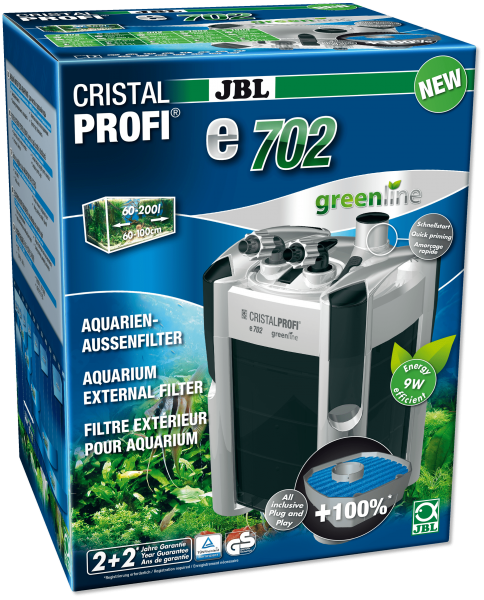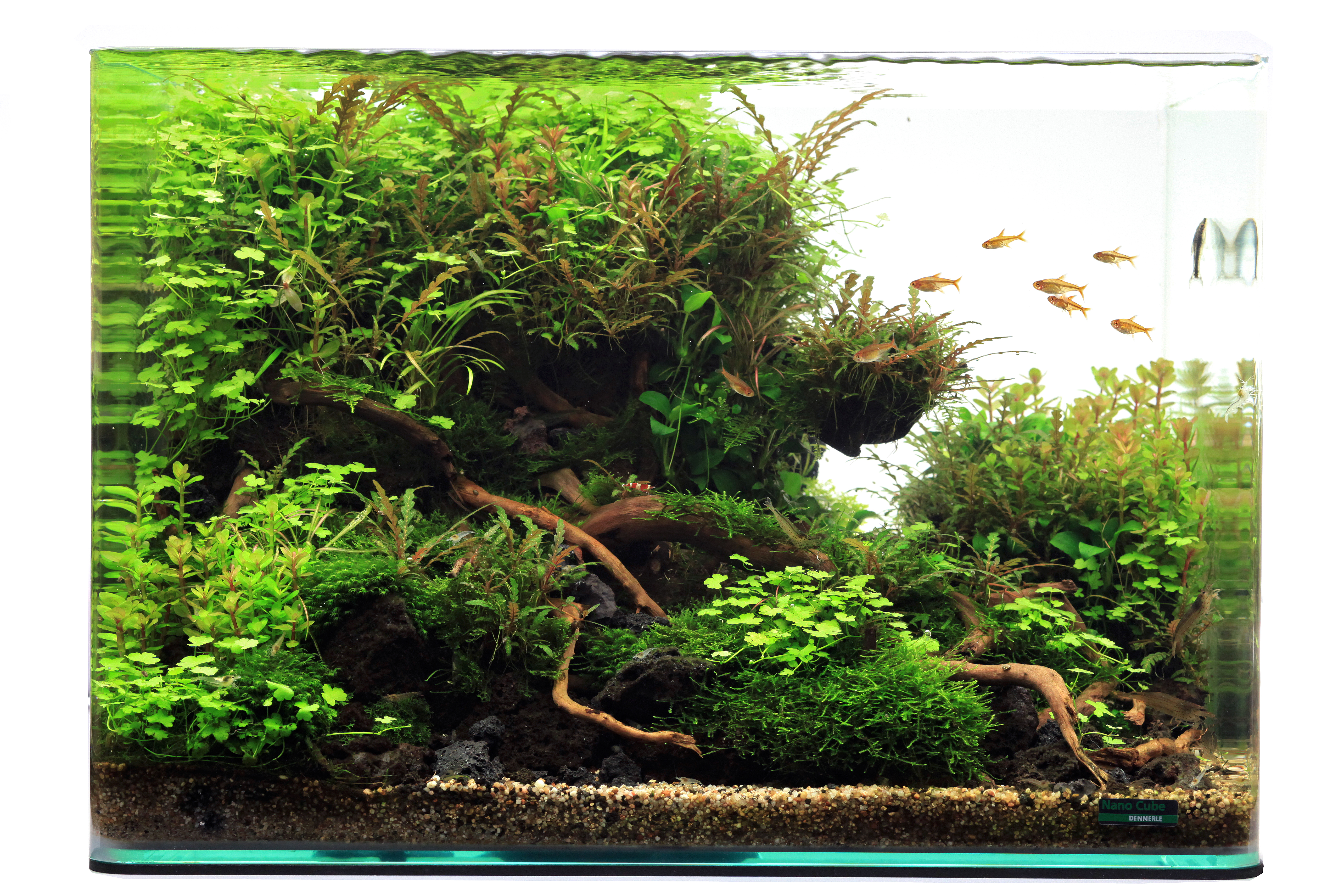Internal filter vs. external filter
Table of contents
- Importance of the aquarium filter
- Internal filter at a glance
- External filter at a glance
- The agony of choice
The filter is the heart of the aquarium - to do without it can end badly, at least if it is not a special technology-free aquarium, which must be maintained just as carefully. When it comes to the aquarium filter, however, opinions often differ.

Importance of the aquarium filter
For constant water treatment, the aquarium filter is essential. It mainly does the lion's job and reliably removes suspended particles and also coarse dirt such as food particles, dead plant parts and other things that would otherwise start to rot in the aquarium. Among other things, this lowers the water quality when larger nutrient deposits form, which in turn affect the well-being of your animals. In addition to the substrate, which is one of the largest filter surfaces in the aquarium, the filter is also a "living organism" in which there are millions of useful and, above all, pollutant-degrading bacteria that break down ammonium (NH4) or nitrite (NO2) in the aquarium water, for example, and convert them into nitrate (NO3), which is much less dangerous and is ultimately also used as a plant nutrient or is also removed again through regular water changes.
Therefore you should give at least the same attention to your filter as well as to the aquarium water as to your animals, so that the interaction is successful and your animals feel well. This is why we talk about biological, mechanical and chemical filtration all at the same time. Biologically effective filter media have the great task of providing space for bacteria to colonize. Coarse-pored material is particularly suitable for this purpose, for example filter mats, filter wool , but also sintered glass or filter balls, which contribute to optimal denitrification. This can be used several times, because you can rinse it off every now and then and put it back into the filter. So it is obvious that a filter surface as large as possible can also filter accordingly well. With appropriate filter media that increase the surface area because bacteria form on it, you can promote this quite well. External filters are therefore equipped with different materials that take over this task, which is sometimes difficult or impossible with internal filters.

Internal filters at a glance
There are three or four different types of internal filters . Probably the best known is the motor-driven, which is operated with a plugged filter module. The water is sucked in through the openings in the module or the attached sponge and transported through the filter media to the outlet nozzle. Depending on the model, these internal filters can also be equipped with different filter media.

Somewhat simpler variants are the HMF, the Hamburg mat filter and the sponge filter. For their operation a Diaphragm pump is necessary, which operates the filter with an air hose. These internal filters are particularly well suited for shrimp aquariums, as even baby shrimp are not sucked in and the sponge surface provides a great bacterial lawn for the animals to graze on. Overall, the HMF and the sponge filter have a fairly long service life and are virtually maintenance-free. From time to time the sponge is washed out or replaced. However, these two filters cannot be equipped with filter media and take up a little more space in the aquarium in places.
The bottom filter also belongs to the internal filters. This is mounted with grid plates under the substrate and equipped with a riser tube, which in turn is operated with an aerator pump. With this filter model, you can prevent especially scum spots in the substrate, and it is also shrimp-safe. For setups with nutrient media, Sand or plants with strong roots, however, it is less suitable.

External filters at a glance
As a stand filter you can place the External filter can be placed next to or visually invisible under the aquarium in the cabinet. This has in its interior different baskets, which you can equip with the most diverse Filter materials which all take over different tasks. For example, you can quickly add activated carbon to filter out the remains of medication applications, water discoloration or anti-algae treatments.
The hanging or backpack filter also counts as an externalfilter, which you can easily hang over an aquarium pane and equip with filter media. Because only its outlet and the suction pipe are located in the tank, this filter takes up very little space, which is why it is particularly suitable for small and open aquariums.

The agony of choice
It is not possible to make a general statement about which filter is best suited for your aquarium. The choice depends on your project, the size of the aquarium and your personal preferences.
For example, if you are running a Aquarium system with several pools, for example, the air-driven or sponge filters make more HMF or sponge filters make more sense, since you can run them with just a single aerator pump or pond compressor. Also, sponge filters are shrimp safe and won't endanger your breeding.
For large aquariums usually External filter are used, which can be stored in the base cabinet in no time at all. Since most of them have quick connectors, you can also clean the filter very easily without having to tinker around in the aquarium. However, if you keep shrimp in your aquarium, it may be necessary to prepare the intake strainer with an additional intake guard to prevent your baby shrimp from ending up in the filter. Also in aquascapes often external filters are used and combined with glass diffusers, the so called Lily Pipes which give the scape a noble appearance.
Whatever you decide: often the decision is easier if you ask for advice and express your concerns or wishes, especially with regard to your animal population. The "old hands" of aquaristics often have one or the other secret tip in store, so that your project will be a complete success and the choice of filters will not be a torture for you.
